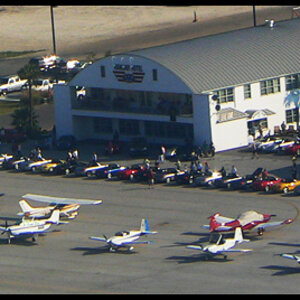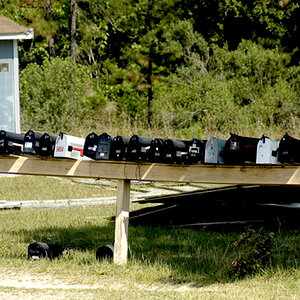LaserSailor
TPF Noob!
- Joined
- Jan 27, 2009
- Messages
- 45
- Reaction score
- 0
- Location
- San Diego
- Can others edit my Photos
- Photos OK to edit
I need a few questions answered so bear with me,
I'm a college student and though I've been into photography for nearly 10 years now I have very little actual experence in the darkroom. I've always used Tri-X but yesterday I accidentally bought some TMax 400.
My questions are if I shoot at ISO 200 (is this called pulling?) instead of the films rated speed of 400, how does the development time change? According to my research (DigitalTruth.com) TMax 400 should be developed in D76 for 12 min at a 1:3 ratio when shot this way.
I'm thinking this means that I dillute 9oz of D76 into 15oz of water and develop normally for 12 min. I'm pretty sure about that.
What about stop and fix? Do those times change? We usually stop for 30 sec (constant agitation) and fix for 5min (constant agitation) but that's with Tri-X 400 pulled to iso 200. Would using TMax change that?
I'd hate to have to shoot a sacrafice roll just to figure out the dev times, so I'd appreciate some input.
Thanks!
I'm a college student and though I've been into photography for nearly 10 years now I have very little actual experence in the darkroom. I've always used Tri-X but yesterday I accidentally bought some TMax 400.
My questions are if I shoot at ISO 200 (is this called pulling?) instead of the films rated speed of 400, how does the development time change? According to my research (DigitalTruth.com) TMax 400 should be developed in D76 for 12 min at a 1:3 ratio when shot this way.
I'm thinking this means that I dillute 9oz of D76 into 15oz of water and develop normally for 12 min. I'm pretty sure about that.
What about stop and fix? Do those times change? We usually stop for 30 sec (constant agitation) and fix for 5min (constant agitation) but that's with Tri-X 400 pulled to iso 200. Would using TMax change that?
I'd hate to have to shoot a sacrafice roll just to figure out the dev times, so I'd appreciate some input.
Thanks!


 thanks for the correction.
thanks for the correction.

![[No title]](/data/xfmg/thumbnail/31/31749-6cf0f99d6bdedf47f7387c5b943fb717.jpg?1619734989)



![[No title]](/data/xfmg/thumbnail/40/40356-883c642c8d24d2709b359f9c8b196fcf.jpg?1619739437)


![[No title]](/data/xfmg/thumbnail/34/34142-948c6bafdf60862125009004d5a06e46.jpg?1619736315)

![[No title]](/data/xfmg/thumbnail/33/33490-cbbf9df0a1c31291ee7a3759afe943cc.jpg?1619736003)